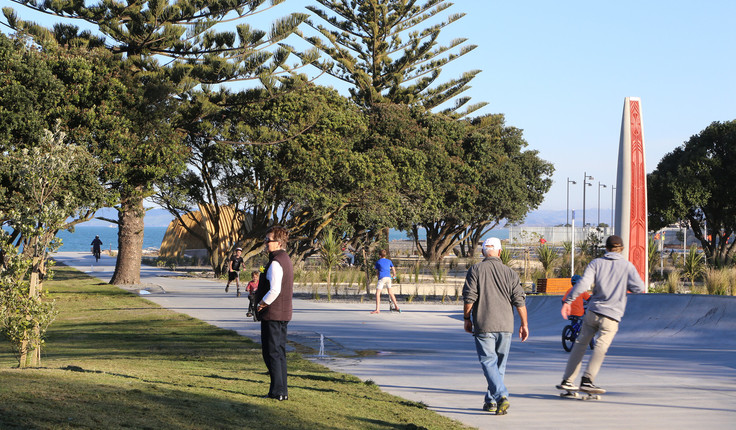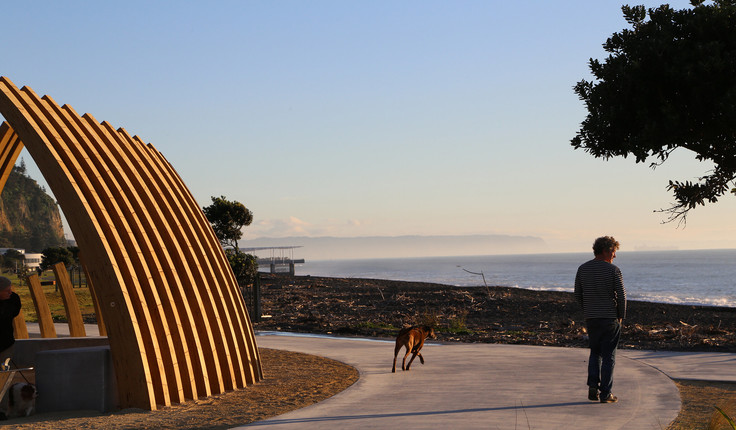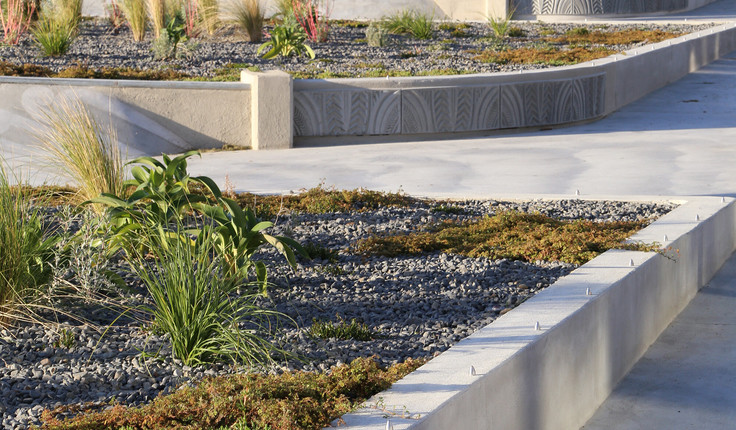News
Weaving together coastal processes with indigenous narrative
Posted 11 12 2019
in News

Award of Excellence
The redevelopment of a waterfront site on Marine Parade in Napier has given new life to the area by connecting the city to its coastline and replacing a waterfront carpark with a significant public space that reflects the natural and cultural landscape of the bay.
The design earned Boffa Miskell an Award of Excellence in the Parks Category of this year’s Resene New Zealand Institute of Landscape Architecture Awards. Judges noted the project “successfully recognises the harsh and rugged coastal environment by utilising a suite of proven hard-wearing materials complemented by a native coastal planting palette.”
The park includes a mix of complimentary spaces, including structures and vegetation that offer shelter and coastal outlooks; gardens and undulating lawn spaces engaging with the sea and city; a multi-sports court; and a series of reflective and interactive water features that are threaded through the site provide something for all parts of the community and visitors alike.


“There is a visible weaving together of dynamic coastal processes with an indigenous narrative that resonates with the beauty of the whenua, and the people of the region, both tupuna (ancestors) and today,” the judges’ citation read.
Boffa Miskell led the landscape design, working with Paris Magdalinos Architects and Napier City Council. A key part of the project was developing the landscape and cultural narrative of the site with artist Jacob Scott, who also created the integrated and stand-alone artworks.
The design references the former gravel spit on which the site sits: a threshold between the Pacific Ocean and the former lagoon upon which Napier was eventually developed. It looks east to the horizon and frames the views and landscape connections to Cape Kidnappers/Mataupo Maui and Mahia Peninsula.
Judges said the project celebrates Kahungunu whakapapa (genealogy) by purposefully highlighting key focal points through strong axial alignments towards the water and sites of significance. Māori artwork is not only visible but integrated to support the larger landscape strategy. The judges recognise this level of conscious attention to detail through all layers of design.
Share
14 Apr
NZILA Board nominations close tonight

Read the insights from current Board members
What does the current Board have to say about this opportunity? REMINDER: Board Nominations close tonight, 14 April, 11.59pm We …
08 Apr
Update from Environmental Legislation Working Group
RMA Reforms and NZILA Wānanga
Our understanding of Spatial Planning and in creating well-functioning environments is more deeply considered than simply green fluff - the …
02 Apr
Follow up from the virtual IFLA World Council (22 and 23 March)

Did you attend the virtual IFLA World Council held last weekend? Presentations and ReportsThese can be found here. RecordingFor those …
Events calendar
Full 2025 calendar